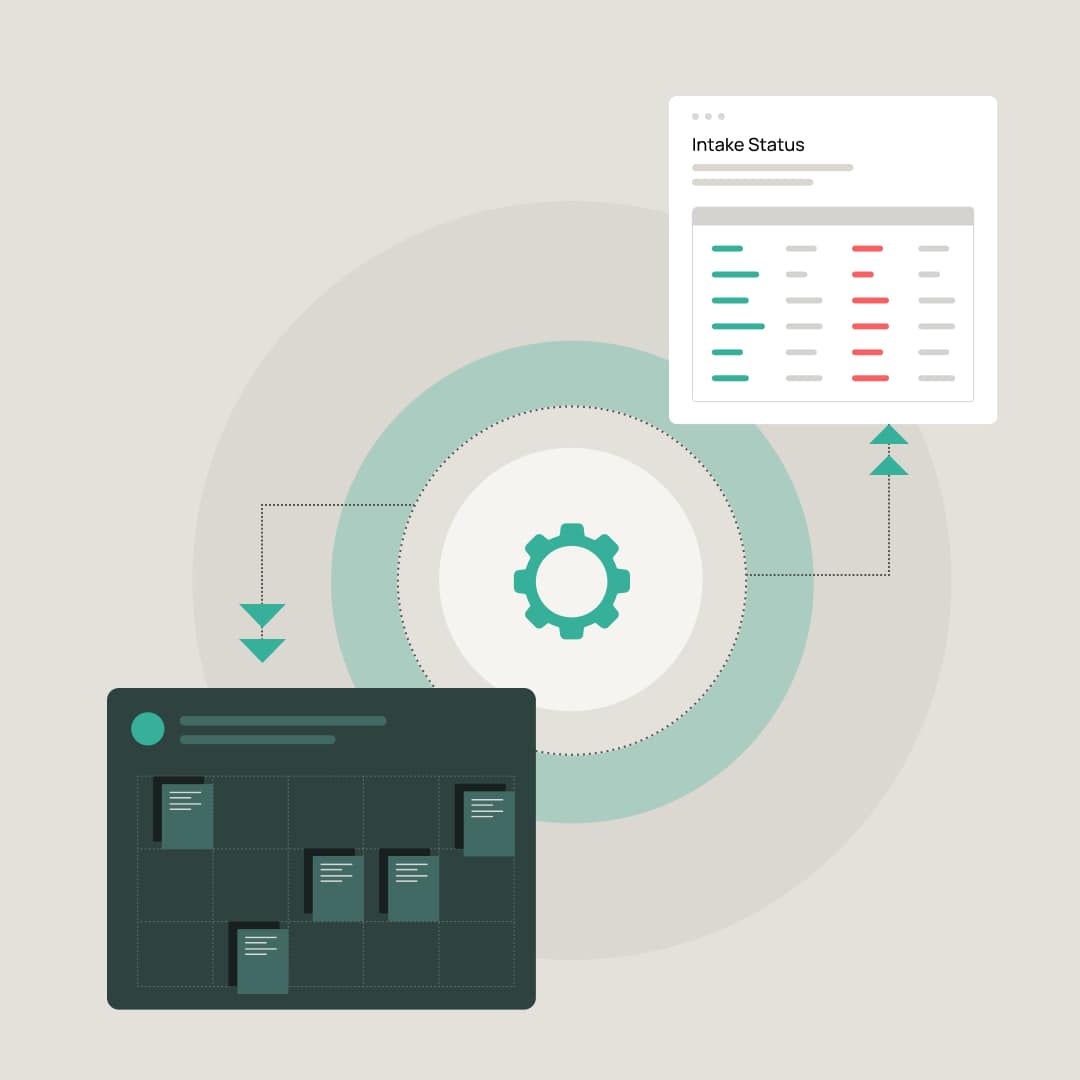For personal injury lawyers facing mountains of administrative work, taking the time to establish more efficient processes can be challenging. Initially, it just feels like more work, not a solution. By automating even a part of those processes, you can gain massive efficiencies and set your firm up for greater success.
With 12-hour workdays as the norm, personal injury lawyers don’t have extra time in their schedules. If there were processes and technology available to relieve many of your legal administrative burdens, you’d likely jump on them.
The good news? There are plenty of tools to help you speed up your legal work. Here’s how your firm’s PI lawyers can streamline their process and optimize case management using practical, real-world workflows to boost efficiency, increase productivity, and deliver better results for clients.
Contents
Understanding legal workflows
Legal workflows are the systematic steps you take for different routine legal processes, such as billing, client intake, and document review. These processes can be incredibly diverse, encompassing everything from litigation to law firm administration.
Well-defined workflows are essential
Well-defined law firm workflows enable attorneys to enjoy better organization and consistency in their casework. They also improve internal communication and client satisfaction. Ultimately, standardized and appropriate workflows can improve accuracy and efficiency across the business.
Challenges with manual workflows
Without well-defined and automated workflows, legal teams can struggle to keep up with daily tasks, leading to missed deadlines, human errors, and duplicated efforts. This can slow case resolution and frustrate clients and internal staff.
Legal workflow examples
Legal workflow automation is the ideal solution to the challenges PI firms face with manual workflows. Creating more defined workflows with the assistance of legal technology solutions can improve efficiency, eliminate repetitive tasks, and keep your cases on track. Here are some examples of legal workflows and the ways you can optimize them to achieve these benefits.
Process for client intake
Law firms need a steady flow of new clients to maintain operations and growth. Signing up a client starts with intake. Here is the general process for handling the legal client intake process:
- Make initial contact with the client
- Schedule a consultation
- Collect client details and case specifics
- Perform a conflict check
- Onboard the client and sign the agreement
With a paper-based system, there is a lot of manual data entry, signature collections, and waiting while a potential client is anxious to get their case moving forward. Delays or mistakes could impact your ability to sign new clients.
Using an automated intake manager, you can set up the workflow to seamlessly handle new intakes. For example, once you qualify an intake, the system automatically sends the forms for the client to complete electronically. Tasks are then created and assigned to specific team members automatically.
Process for medical record retrieval
Personal injury cases often involve the collection and review of extensive medical records. The review process can be labor-intensive, including the following steps:
- Request medical records from healthcare providers
- Track follow-ups to ensure timely responses
- Receive and review the records
- Upload documents to the case file
- Share records with the legal team
Automation tools can simplify and streamline medical record retrieval process significantly. You can set up the workflow from the date of the incident to assign the above tasks to a specific team member. Tasks are then created and assigned automatically.
Legal workflow software also automatically protects sensitive information like medical records to adhere to HIPPA requirements. This automation speeds up the overall process, reduces manual errors, and frees up lawyers to perform other tasks.
Process for legal document drafting
Managing legal documents is foundational to ensuring positive case outcomes and law firm growth. Here is a typical workflow for legal document drafting:
- Collect the required information from internal and external sources.
- Create the initial contract.
- Negotiate the contract terms.
- Make adjustments to the contract as necessary.
- Secure e-signatures once all parties agree.
- Get contract approval if necessary.
Because legal document drafting can involve a lot of back-and-forth communication involving multiple parties, delays, and errors are common. Automating this process using standard contract templates and e-signatures can reduce errors and secure faster turnaround times.
Process for personal injury case management
As a personal injury law firm, your case management processes can make the difference between consistently positive outcomes and constant challenges. A typical personal injury case management process generally looks like:
- Conducting an initial consultation and doing client intake
- Setting up an active case file for new clients
- Gathering evidence and reviewing medical records to support a case
- Entering pre-lawsuit negotiations with the insurance company
- Filing a lawsuit when negotiations fail
- Going through the discovery process and preparing for trial
- Presenting the case in court or negotiating a settlement
- Distributing funds and deducting legal fees once the case is resolved
With legal workflow automation, you can automate many repetitive tasks using triggers. For example, instead of manually assigning new cases to attorneys, this can happen automatically once a prospect e-signs the intake documents. You can use automation to search and gather records, send out reminders for appointments and court appearances, save your law firm time, and stay more organized.
Automate your legal workflows with CloudLex
All of these processes (and more) are easy to streamline with CloudLex. Our legal workflow automation tools allow you to assign all tasks at once. With these solutions, you can create custom workflows for any stage of your case that requires repetitive tasks.
Once assigned, your colleagues and staff will get reminders whenever they log in to CloudLex, plus follow-up emails as an added protection against missed deadlines. You can even track task status on your dashboard.
With legal workflow management software, your firm can centralize and organize client paperwork, speeding up the information retrieval process and reducing the risk of file misplacement. Not only are these solutions secure, but they are also highly scalable, so you have the tools you need to fuel law firm growth.
Learn more about CloudLex’s legal workflow software
CloudLex is a leader in legal automation for personal injury law firms. We designed and built our system to create efficiencies specifically for the challenges facing PI lawyers.
Every CloudLex client relationship comes with the support of an expert team that will work with your firm to ensure that the onboarding, training, and implementation process will help you achieve your goals. Contact us today to learn more.



